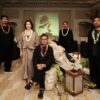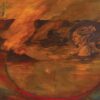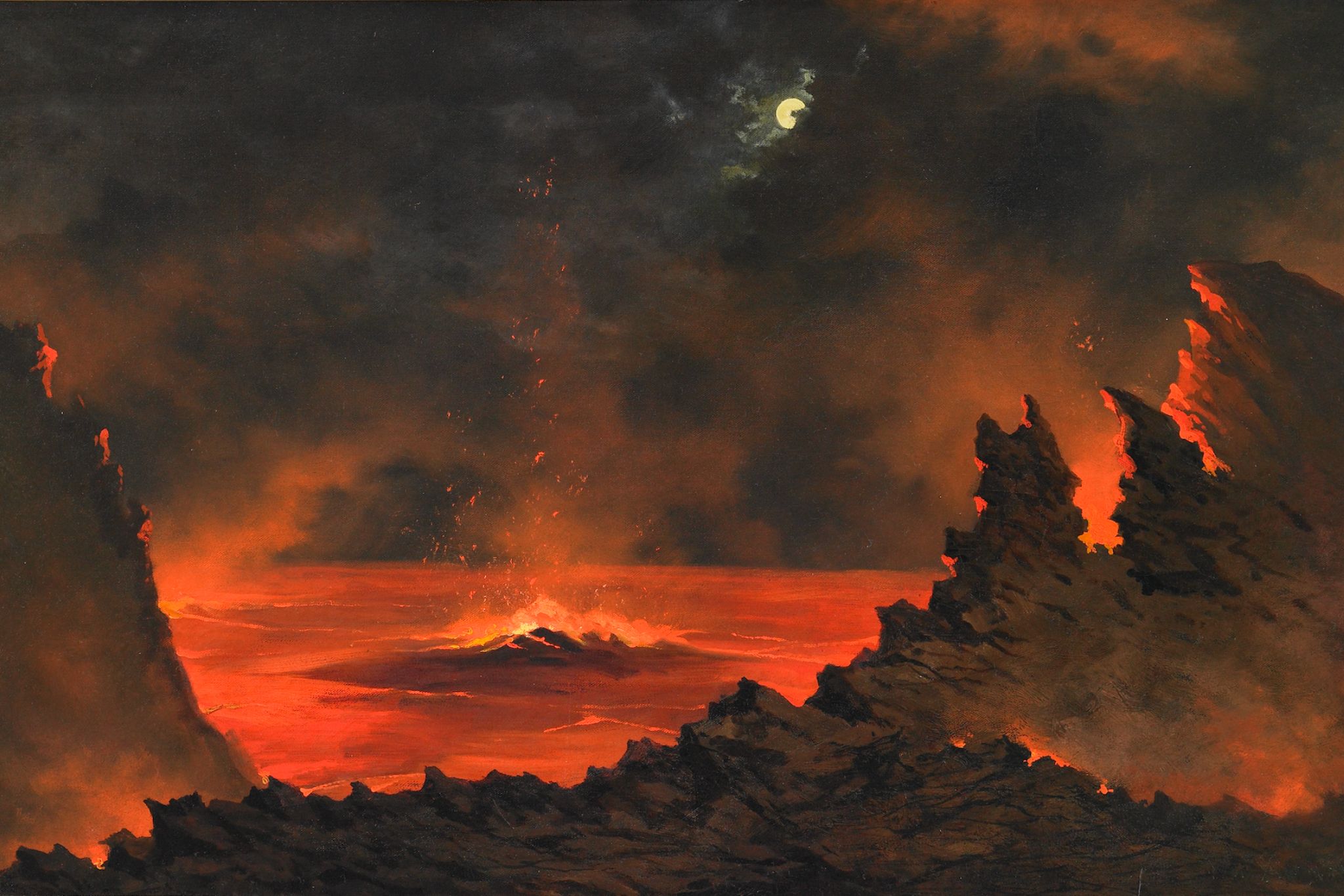Text by Sonny Ganaden
Images courtesy of Honolulu Museum of Art
The painters of the Volcano School, 14 in total, produced hundreds of works in the 19th and early 20th centuries. Most painted eruptions of Kīlauea, a volcano on Hawai‘i Island that has been active since it first emerged from the ocean floor more than 200,000 years ago. Revered by Hawaiians for a millennium, this volcano has long had periods of explosive activity and effusive lava flows. The latter state is what was witnessed by the Volcano School artists, who also but less often painted Mauna Loa. These two volcanoes, along with three others in stages of extinction, dormancy and activity, form the largest island in Hawai‘i.
Volcano School members hailed from the Pacific, North America, Europe, and Asia. Ogura Yonesuke Itoh made his paintings in his 20s after he jumped ship in Honolulu as a Japanese sailor. Jules Tavernier, who was from France, painted from close observation, his works rendered nearly entirely in black and crimson. As a whole, Volcano School creations are otherworldly. Most border on the surreal even though they were painted realistically, capturing the unearthly drama of eruptions in the blackness of night. They display lava that looks like rivers and waterfalls, fire and embers replacing the cool hues of rivers and the sea.


In January 1873, British naturalist and writer Isabella Bird also went to see the volcanoes for herself. “Suddenly, just above, and in front of us, gory drops were tossed in the air, and, springing forwards, we stood on the brink of Hale-mau-mau, which was about 35 feet below us,” she wrote in a book about her journey. “I think we all screamed, I know we all wept, but we were speechless, for a new glory and terror had been added to the earth.” Her descriptions remain unparalleled. “Everywhere through its vast expanse appeared glints of fire—fires bright and steady, burning in rows like blast furnaces; fires lone and isolated, unwinking like planets, or twinkling like stars … an incandescent lake two miles in length beneath a deceptive crust of darkness, and whose depth one dare not fathom even in thought.”
Much has changed since Bird’s writings: Kīlauea is now within the jurisdiction of the United States, and Hawai‘i Island has grown in mass. Remnants of past flows are evident across the eastern flanks of Mauna Loa and Maunakea. But the volcano’s eruptions are as alluring as ever. When Kīlauea erupted again from May to August of 2018, the news and footage enraptured people around the world.

Constance Fredericka Gordon Cumming. Crater of Kilauea, c. 1879. Ink, ink wash, and white heightening on paper 5 7⁄8 x 8 3/16 in. (14.9 x 20.8 cm). Mat: 14 x 18 in. (35.6 x 45.7 cm). Purchased with funds derived from the 1992 Academy auction, 1992.
Many Volcano School paintings are in the collections of the Honolulu Museum of Art and the Bernice Pauahi Bishop Museum. In 2016, the Honolulu Museum of Art debuted a piece by one of the school’s luminaries, Charles Furneaux, which it had acquired and carefully conserved. This untitled oil painting shows a milky cloud of vapors encircling a lone lava geyser amid a lake of lava so still its surface reflects the surrounding volcanic outcropping.
Volcano School artists were inspired by religious wonder, transcendentalist views on the purity of nature, and Manifest Destiny. Their paintings also played a functional role, capturing the dramatic light of the sublime better than drawings or cameras, which were flooded by the radiance of molten lava, their plates easily over-exposed and ruined. Now, from the depths of museums, the paintings of the volcanoes’ eruptions glow on.





